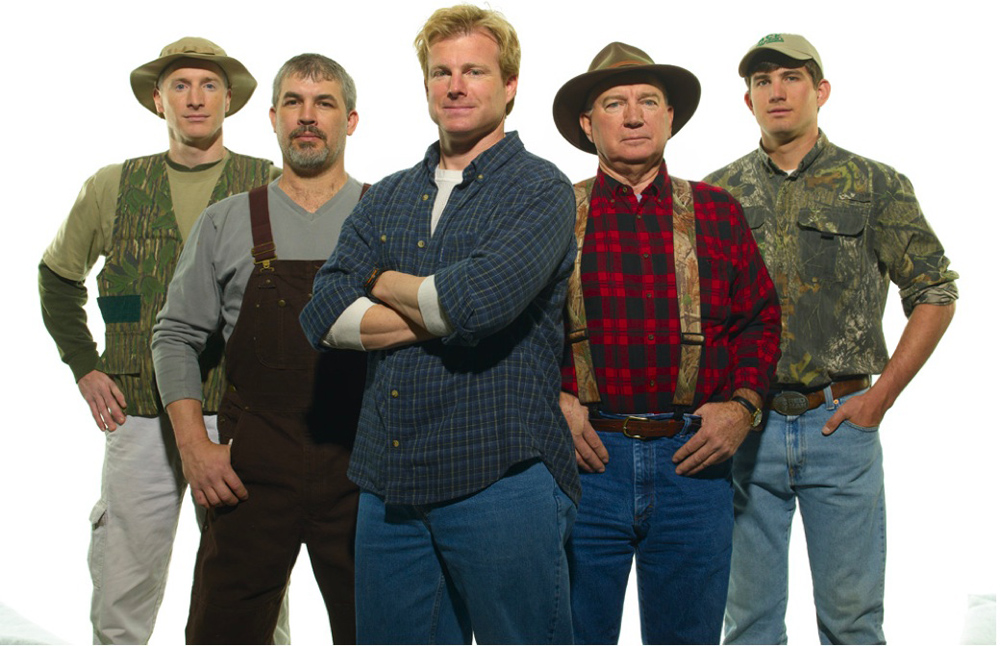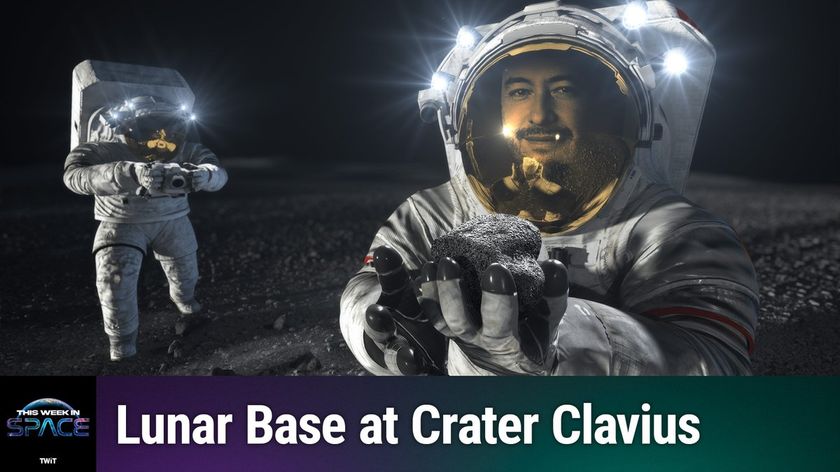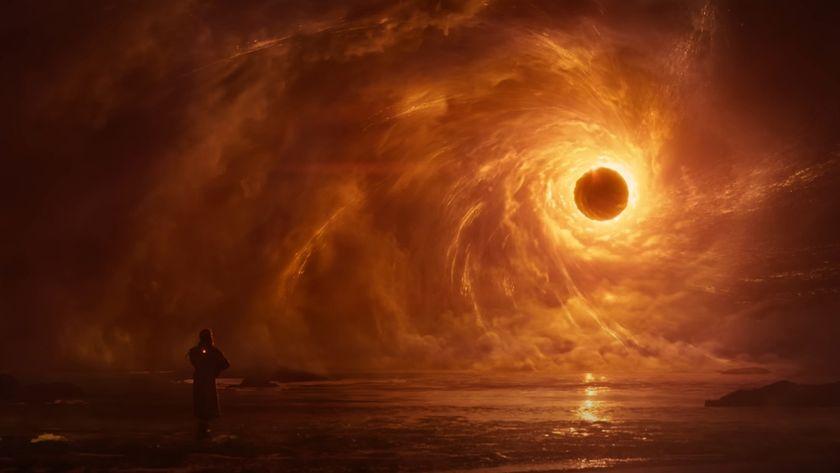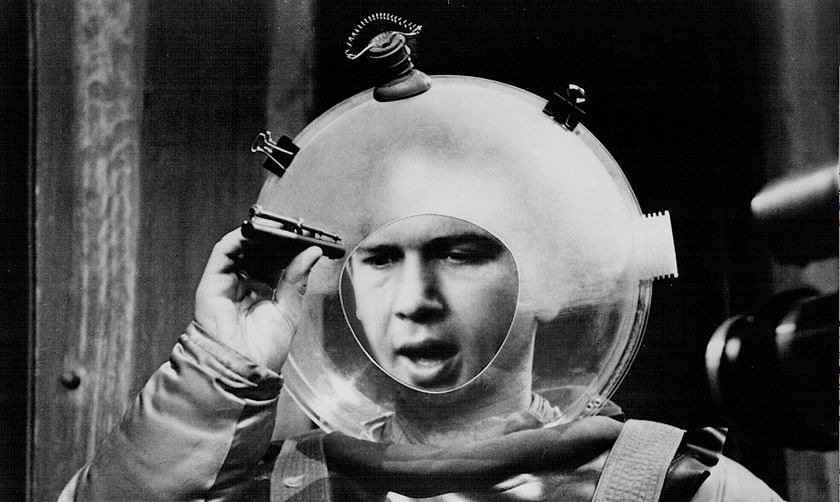Meet the Ringleader of the 'Rocket City Rednecks'

HUNTSVILLE, Ala. — The star of "Rocket City Rednecks," National Geographic Channel's new down-home reality show, isn't your stereotypical Alabama redneck.
Travis Taylor holds five science degrees, including a Ph.D., and he's working on another Ph.D. in aerospace engineering. He may drawl and drink beer, but Taylor has been a self-proclaimed redneck rocket scientist for over 20 years.
His new show, "Rocket City Rednecks," makes its cable TV debut on the National Geographic Channel Wednesday night (Sept. 28 at 9 p.m. EDT — check local listings), where the Rednecks try to bomb-proof a truck using beer cans and launch a moonshine-fueled rocket, all while shouting their motto of "safety third."
SPACE.com shared a cold one with Taylor at the show's world premiere here at the Davidson Center for Space Exploration at the U.S. Space and Rocket Center. [Photos: Behind the Scenes of "Rocket City Rednecks"]
Taylor talked about how not to lose a thumb while launching homemade rockets and how NASA could use a little 'hillbilly ingenuity':
SPACE.com: I have to say, Dr. Taylor, that when I first heard about a show involving rednecks and rockets, I thought, "Somebody is going to lose a thumb."
Travis Taylor: Hey, if you saw that [the premiere], it came close. But we were following safety protocols and we had the charges set in a way so that if they did blow the only thing it was going to be was really loud and give us a headache. We do do a lot of crazy things, but we always do it safely.
Get the Space.com Newsletter
Breaking space news, the latest updates on rocket launches, skywatching events and more!
SPACE.com: Before doing something dangerous, you guys shout, "Safety third." What does that mean?
Taylor: We were talking about the joke with shop teachers that you have in high school; they're always missing a couple of fingers. Rog did something and he said, "All right now, y'all remember that you always got to be safe about it." Michael came by and said "Yeah," and he had his hand like that [showing only three fingers as if his ring finger was missing] and said, "Safety third."
I thought about it and I want the guys joking about safety, because if they're laughing about safety, they're saying it often. So they're really thinking about safety although they're joking about it. [Infographic: Space Travel: Danger at Every Phase]
SPACE.com: Craziest thing you've ever tried to build?
Taylor: A submarine. Damn near killed us. I tell people, "We've only almost died once making this show."
SPACE.com: How did you become a redneck rocket scientist?
Taylor: I got started when I was 17-years old. I won the state science fair. I built a radio telescope. Picked up radio waves from Cassiopeia A and Taurus A and a couple of other places that were supernova remnants and black holes and such. And the first prize was a job on Redstone Arsenal with an Army scientist.
Well, my next-door neighbor had helped me work on this. He worked on a laser program for the Army, and he said, "Well, if that's the job, then why don't I see if you can't just come work for me?"
And I started working for him and learning quantum physics and directed energy physics and stuff, and the Army paid my way through school.
SPACE.com: You're resume doesn't shout, "Redneck." Why use such a derogatory term?
Taylor: Go look up where the word "redneck" came from. It came from the 1800s where the family farm and sharecropper was working on his farm, and everything they owned was on that farm. Their family and everything. If something went wrong, they had to figure out with just what they had how to fix it. It was a little bit like Apollo 13, right?
They had to figure out how to fix it with what they had or their family went hungry. And people started saying, "Those are the people with the red necks," because they were sunburned and so on.
So, is it an insult to call someone hard-working, clever, resourceful and family centric? In my mind it's a compliment, and that's the way we take it. It was the Rocket City rednecks that built the rockets that put man on the moon. [Lunar Legacy: 45 Apollo Moon Landing Photos]
SPACE.com: You're from Alabama. "Roll Tide" or "War Eagle?"
Taylor: War Eagle. I'm the only one, the rest of them say, "Roll Tide." That makes for a lot of fun on Saturdays.
["War Eagle" is the battle cry for fans of Auburn University's Tigers football team. "Roll Tide" is the cry for the University of Alabama's Crimson Tide football team. Their rivalry is among the biggest college football.]
SPACE.com: Will having rednecks on TV make science and space research more appealing to people that normally wouldn't be interested?
Taylor: That's exactly right. That's our point. Whether it's building a rocket, whether it's building an Ironman suit, whether it's building armor or whether it's building a fireworks display, I don't care. The point is, put down the X-Box controller. Get out of the virtual world for a minute. Walk out to the garage and find some things and tinker it. Figure out how the real world works.
I want kids to get up and do something. You know, when I was 6-years-old, I took a toilet paper roll, some poster paper, some Elmer's glue and I built my first rocket. Kids don't get much of that anymore and I want to see that change.
SPACE.com: How can the show's backyard science can help space research?
Taylor: Well, we did one episode called "Redneck SETI" and I had the idea that if we were going to have a presence on the moon, that we would want to have large high-bandwidth communication back and forth to the Earth.
And if we're going to do that you need a large dish, right? And it costs a lot of money to send the material to make a big dish up to the moon. I had the idea that the moon is about 6 to 7 percent reflective in the RF bands. And so we did an experiment where we dug our own crater in a field on my uncle's property and used the crater as a dish, put a feedhorn at the focus of the crater that we cut. And it worked perfect as a dish, and we used it as a radio telescope. We picked up signals from outer space.
So think about just using these mile-wide craters on the moon as our dish for high-bandwidth communications between the moon base and Earth.
SPACE.com: Do you think NASA can learn something from your 'hillbilly ingenuity?'
Taylor: They absolutely could. Actually, I think NASA has forgotten this. You know, that's what the Apollo-era rocket science was all about. It was Rocket City rednecks that did that. My dad was one of them.
The oldest living satellite that the American's built is still in orbit today, it was called Vanguard 1. Engineers gave the blueprints to [German rocket scientist Werner]von Braun and the other guys and then they handed it off to the techs to build. And the tech's said, "There's no technology that exists to build this satellite."
And so my dad was one of the machinists that had to invent tools to figure out how to make the design they had in the blueprint. That's a piece of the culture that's been lost. And we've got to get that back to the moon, if we're going to go to Mars, if we're going to put humanity and Americans in space, and not renting rides from the dadgum Russians.
SPACE.com: Thanks for talking with us, Dr. Taylor. Go drink some beer and enjoy the rest of the premiere.
Taylor: Alright, man. I heard that.
You can follow OurAmazingPlanet staff writer Brett Israel on Twitter: @btisrael. Visit SPACE.com for the latest in space science and exploration news on Twitter @Spacedotcom and on Facebook.
Join our Space Forums to keep talking space on the latest missions, night sky and more! And if you have a news tip, correction or comment, let us know at: community@space.com.
Brett Israel was a staff writer for Live Science with a focus on environmental issues from 2009 to 2013. He holds a bachelor’s degree in biochemistry and molecular biology from the University of Georgia, a master’s degree in journalism from New York University, and has studied doctorate-level biochemistry at Emory University.



